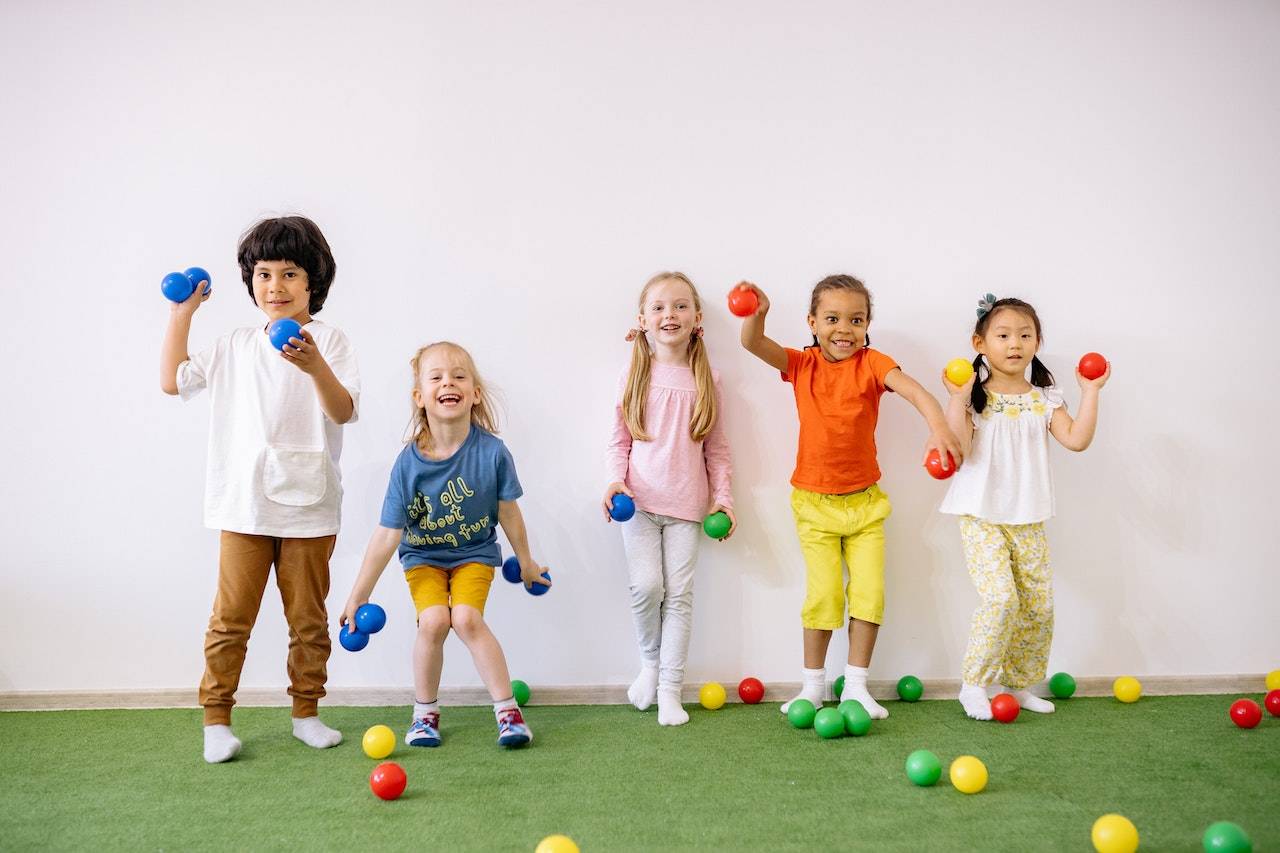How to Encourage Physical Activity in Children

According to the CDC, children should be physically active for at least 60 minutes a day. With so many digital entertainment options today, it is more difficult than ever to encourage children to incorporate movement into their day.
Children don’t have the life experience to understand the importance of physical activity. Simply telling them that it will keep them healthy and strong as they get older isn’t enticing enough for them to put down the iPad and go play outside. Fortunately, there are ways to encourage physical activity in children in ways that they can understand and appreciate.
Lead By Example
Whether they realize it or not, children are always watching what you do and using that information to form their own habits. One of the best ways to make physical fitness a normal part of their lives is to lead by example and prioritize your own physical activity. Consider getting up and doing a few squats or lunges in between episodes of the show you’re watching. Maybe take the stairs rather than the elevator when your kids accompany you to a large building. You can also include them in your own workouts and modify them in an age-appropriate way so they can join in on the fun and fitness. Kids often follow your lead, so having your own positive relationship with exercise will help them develop their own positive opinions about physical activity.
Make It Fun
We were all children once upon a time. We can all relate to how much fun it was to run around playing tag, having dance parties, or climbing on the playground with our friends. Kids are naturally drawn to activities that are fun and engaging. Turning physical activity into a game will encourage them to participate and prevent them from getting bored.
While your child may not be interested in a rigid workout routine that includes reps and sets, there are plenty of kid-friendly alternatives that make exercise more exciting and interesting for their imaginative minds. Consider encouraging a game of wiffle ball, kickball, or frisbee that will encourage them to run, jump, bend, and twist without making it feel like exercise.
Sneak In Exercise Where You Can
For older kids who are a bit more stubborn and less interested in playing tag or a game of catch with friends or family, you may have to get creative and sneak in exercise where you can. This might include encouraging walking or biking to their friends’ houses or a local store, having them join a social activity such as a community soccer team, or making it competitive by challenging them to see who can do more push ups, sit ups, or jumping jacks during commercial breaks. You can even offer a small prize to spice things up a bit and motivate them to participate more often.
Make It a Family Event
Whether it’s going for walks after dinner, family vacations, or including kids in household activities, try to find ways to make physical activity a family event, rather than a solo activity for the kids. Family walks, nature hikes, or bike rides are great ways to get everyone out of the house and enjoy some fresh air as you bond and get the blood pumping. You may also want to consider family vacations or weekend activities that involve physical activity, such as kayaking, camping, swimming, or cycling. Making a day of it will help keep kids away from screens and devices for longer stretches of time to keep them healthy, active, and occupied.
You can also encourage kids to participate in household chores or activities such as mowing the lawn, cleaning their room, gardening, or washing the car to get them up and moving throughout the day.
Work With a Personal Trainer
Personal trainers aren’t just for adults! While going out to play is a great way to encourage kids to be more physically active, some may benefit from having a more structured routine. Personal trainers for kids create age-appropriate exercise plans that incorporate game-play, light weight training, and exploration to build confidence, healthy habits, and a healthy self-image.
Younger kids benefit from play-based exercises, while preteens with more coordination and proprioception can begin using more focused training to help them with things like sports performance. As they grow and develop, they can begin learning how to build strength and muscle to improve their self-esteem and create a healthy relationship with their bodies.
A positive, age-appropriate environment is the key to success when it comes to working with a personal trainer for kids. The right trainer will have experience working with kids in different age groups, and know how to have fun and encourage your child while guiding them on their evolving fitness journey as they grow.

